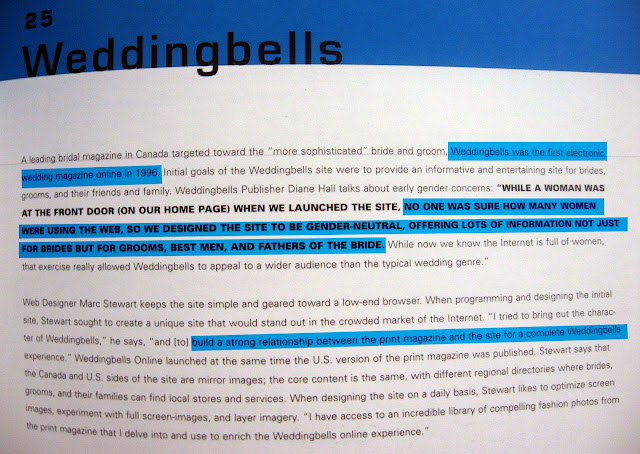E-zines have forever changed the way we think about magazines and the way they work.
True 'zines were a phenomenon in the early '90s, underground self-published publications distributed through the mail, friends and local resources. Many were filled with alternative views and visuals rarely seen in the mainstream media. With the function of the Internet, the 'zine publisher could now compete with the larger traditional magazines; cost of publication and distribution was no longer a factor.
I do agree that Web Access is now critical in today's competitive markets. The web is used so much that businesses and even designers, like myself, haven't got much chance of getting anywhere without a website/online portfolio and have to start posting work to get themselves known online. This is because of the amount of competition that there is.
Talking about the design and technical philosophy behind the Fortune.com site, Peacock says "simplicity and consistency rule, in design and tech. If you try to do too much with either, you can lose your customers. Over-designed sites can alienate readers. Overreacting with technology often degrades your readers' experience."
"If a site tries to do to much or strays from it's core mission, it's doomed. By defining Fortune's primary audiences, we can answer their needs online."
Creating subscription-only sites can probably have it's benefits but will also have downfalls. Some people don't want to have to sign up to anything - they don't want countless emails from companies in their inbox every day.
From a designers point of view, sites like this are great for sharing information and advice with each other.
Going Digital can cut out postage costs, printing costs and distribution worries. People all over the world can look at e-zines - it gets your design and information out there and fast!
They have to be careful to keep the e-zines content based yet still have a great looking site.
This quote above sums up my thoughts on e-zines.
Originally, this e-zine was being avidly read by the Hipster subculture. However, being online means it can go out to a much wider audience.
People can interact with an online magazine by having their say on a 'feed.'
A printed magazine is bought by those who want to read it - so you're guaranteed that buyers will read through to the end. However, online, you need to give readers a reason to click to the next page. If they're not interested they won't go back.
The web doesn't have that 'personal' feel like a printed magazine does.
"interactive features on the Web site enhance the magazine by giving readers a chance to participate."





















































No comments:
Post a Comment